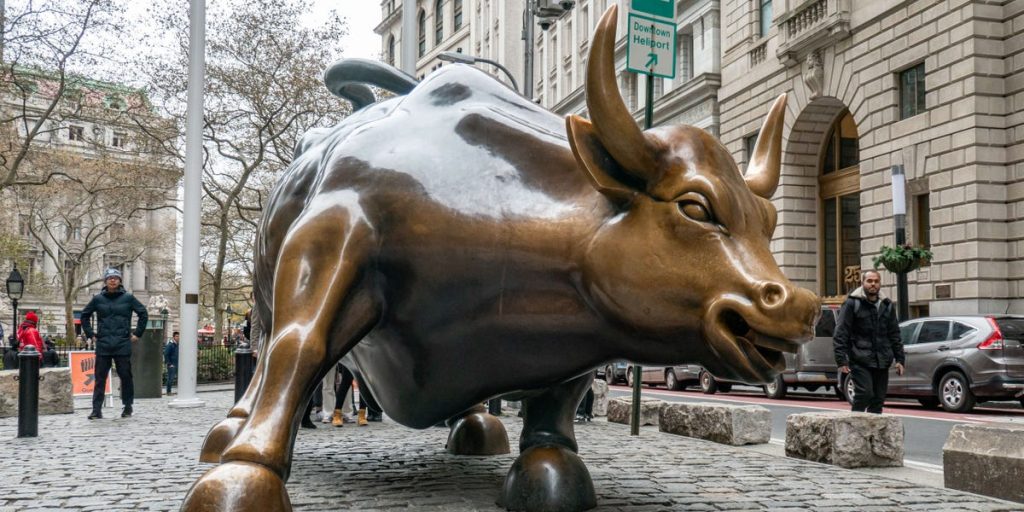Risk is back in fashion on Wall Street as investors shed their fears and become more adventurous with their cash.
Gone are the concerns about inflation, which spiked to a 40-year high of more than 9% less than two years ago, and interest rates, which the Federal Reserve hiked from almost zero to above 5%.
Anxiety about two major foreign conflicts, global economic malaise, a frozen housing market, political strife, and a bubble in AI stocks has been crowded out by excitement about potential gains.
There are still investors who remain wary, but the overall market sentiment has turned bullish in recent months, fueled by robust growth and employment plus the prospect of the Fed cutting rates later this year.
Wall Street is betting big on a soft landing, where the Fed succeeds in bringing inflation down without unemployment surging or a recession taking hold.
Investors also expect risky assets such as stocks to benefit from falling interest rates, as returns from safer rivals such as Treasury bonds and savings accounts will drop.
“The environment for risk-taking is supportive for now,” BlackRock Investment Institute said in a recent commentary.
The asset manager’s research arm suggested the excitement around AI-linked stocks like Nvidia, which has powered the market higher this year, could expand to include a wider range of names.
“We went overweight US stocks this year because we think the upbeat risk appetite can persist and broaden out beyond artificial intelligence,” BII said. However, it flagged that inflation could rear up again later this year.
Similarly, Goldman Sachs analysts said in a recent outlook that “risk appetite is poised to grow” this year as recession relief and rate cuts embolden investors.
When the music stops
The outlook for stocks and the economy might seem brighter, but it’s worth being at least a little skeptical of the current enthusiasm.
After all, it’s in Wall Street’s interest to sound positive, as striking a bullish tone invariably attracts more client funds than urging people to stay out of markets.
The renewed appetite for risk could also represent a fresh wave of greed and speculation destined to end badly.
“Nobody seems to care about valuations, and now you have Wall Street strategists laying claim that we are in a brand new era,” veteran economist David Rosenberg said in a recent note.
Similarly, bubble expert Jeremy Grantham warned there’s never been a sustained rally from today’s lofty valuations or full employment in the history of the US stock market.
Grantham underscored that high valuations erode future returns, meaning the long-term outlook for stocks is “as poor as almost any other time in history.”
Even market bulls are worried that excessive euphoria could pave the way for a painful correction.
“The problem with meltups is that they do need to meltdown,” top analyst Ed Yardeni said earlier this year.
FOMO versus risk
A sunnier economic outlook, the promise of rate cuts soon, and the potential for AI to supercharge productivity and boost corporate profits are just some of the reasons to feel positive as an investor now.
Yet there’s also cause for concern when stocks, bitcoin, gold, and house prices are all near record highs, inflation seems stuck at almost double the Fed’s target rate, unemployment climbed to a 2-year high in February, and a raft of global growth headwinds remain.
For now, investors appear to be more worried about losing out on further gains than they are about losing money in a crash, which helps explain why markets are in a risk-on mood.
“The bullish trend is too strong to let go of and fear of missing out on the AI rally is the major driver of the big-cap stocks right now,” Ipek Ozkardeskaya, a senior analyst at Swissquote Bank, said in a recent note.
Whether investors will be rewarded for being optimistic about markets and the economy, or punished for succumbing to FOMO and mass speculation, is far from clear. For now, those embracing risk can enjoy the adrenaline rush.
Read the full article here




